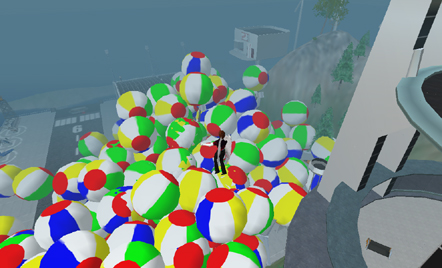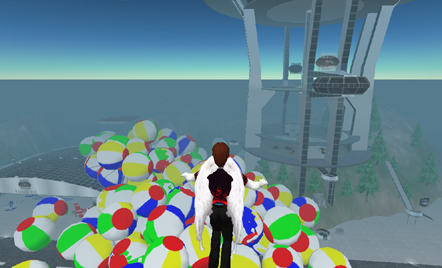Second Life A-Z |
Second Life Step by Step |
Second Life Utilities (SLUTS) A-Z |
Summary: This post describes and shows picture of a beach ball that is self-replicating as an example of one form of out of control object that, combined with many others like it, could constitute a type of “grid attack” within Second Life. This event happened on Saturday, July 28, 2007.
Losta Hax Being Chased By Self-replicating Beach Balls In Second Life
I was already writing this up before I read about how grid attacks were taking out Second Life (Here’s the SL Blog on the subject.)
Here’s a more informative link about the nature of these attacks, actually.
Anyway it’s even more relevant now that this all seems like it could be part of the same larger grid attack.
So here’s Losta Hax‘s story…
Losta was vehicle shopping over at Abbotts Aerodrome, when he noticed about 7 or 8 beach balls sort of rolling around behind him.
They seemed sort of out of place there on the landing strip, and he was thinking they must have rolled over from the property next door or something.
He turned his back on them for a moment, and went back to shopping (more on the lovely vehicles he bought and how he learned to operate them later). When he turned back around to look at the balls, there were three or four times as many, and he could see them “popping into existence,” one after the other.
Soon, he was standing in a pile of beach balls, and had to fly up to escape them.
A little more explanation – for newcomers as yet unfamiliar with “grid attacks”
One example of a “Grid Attack” is a program that causes objects to replicate without end, (much like a Denial of Service attack takes up a website’s resources, causing it to crash).
Were Second Life’s resources to be genuinely used up, simply by the sheer numbers of people legitimately using the site, it would be sort of a Slashdot effect for Second Life. (Rather than a D.O.S. attack, in which programs, rather than people, request a site’s web pages over and over again, in a non-legitimate fashion.)




